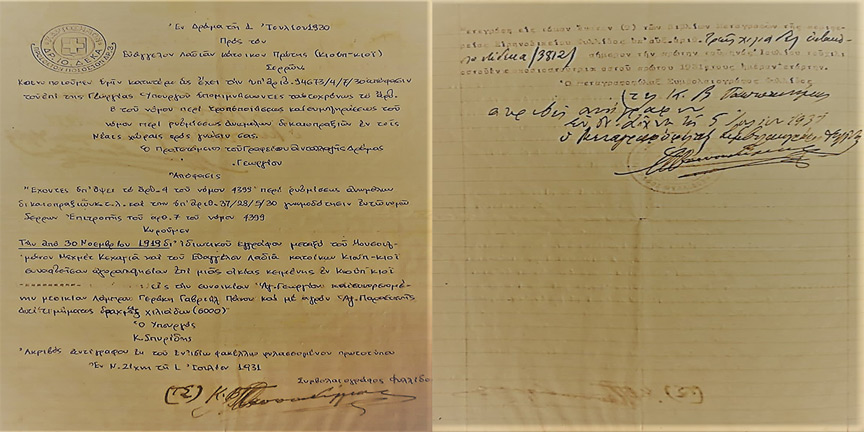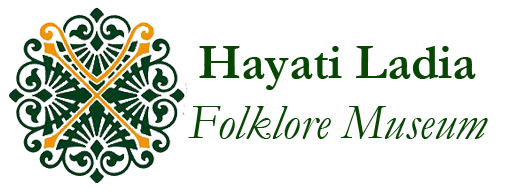1919

In 1919, Evangelos Ladias buys the wide-fronted mansion from the Muslim Mehmet Kehagia. The private agreement they sign is ratified in 1931 by the Greek State.

The decision for the museum.
The house that is inhabited to this day, is a sample of local architecture and an example of cultural exchange between Christians and Muslims.
1920

The two warehouses and the hayati** are built in the yard of the Ladia house, to house the commercial and agricultural activity of the family. The main construction materials are stone and wood which come from Mount Paggaio. The exterior walls are structured with stones that have been bonded with mortar and are reinforced with visible timber. The internal partitions are made with the bagdati technique, they consist of a wooden frame on which horizontal wooden slats are nailed. The buildings are samples of the industrial architecture of the 20th century.
** The hayati is the covered balcony continuation of the main building. In the era of tobacco cultivation it was used as an auxiliary space but also as a tobacco dryer.
** The hayati is the covered balcony continuation of the main building. In the era of tobacco cultivation it was used as an auxiliary space but also as a tobacco dryer.

1939

The photo shows members of the Ladia family in front of the hayati and the warehouses. The strings of tobacco have been hung on the crates for their drying.

2013

The restoration works of the tobacco warehouses begin, which will be turned into a museum to house the collection of objects. The maintenance works respect the architectural design, building materials but also the windows, the gate and the doors of the buildings are reused, significantly reducing the degree of intervention and alteration of the original buildings. The hayati and the cobbled path, which connects the spaces, have not undergone any work.
Today

The typical type of Pangaeorean house, with local folk architecture, is a two floor rectangular house. The building materials used for its construction are taken from the surrounding area: wood from forest, slate and stones from the mountain. Tiles are used for the roof. The frame, the floors and the roof are made of wood. The gaps of the frame are coated with plaster mixed with straw. The partition walls are made of laths with plaster. The air gap that remains between the slats has a thermal insulation value.
The ground floor was usually used as a stable, while an internal staircase led to the first floor. The semi-outdoor space on the south side of the house (hayati) functioned as a vestibule that served the needs of ventilation but was also used as a smoke dryer for other agricultural work. The different housing variants had common features and are the following:
- the walls were thick (0.70-0.90 m thick) and the main building material was stone so that the houses were protected from the strong winds of the mountains,
- the openings of the walls on the sides with unfavorable orientation were very small to non-existent.
Thermal insulation was achieved with round peeled wood on reeds or planking and coated with plaster.
The roof was built with a slope to deal with snow and the rooms were covered with wood and ceilings.
The houses were elevated, with more windows on the first floor than on the ground floor.
The rooms had low ceilings for heat storage.
The ground floor was usually used as a stable, while an internal staircase led to the first floor. The semi-outdoor space on the south side of the house (hayati) functioned as a vestibule that served the needs of ventilation but was also used as a smoke dryer for other agricultural work. The different housing variants had common features and are the following:
- the walls were thick (0.70-0.90 m thick) and the main building material was stone so that the houses were protected from the strong winds of the mountains,
- the openings of the walls on the sides with unfavorable orientation were very small to non-existent.
Thermal insulation was achieved with round peeled wood on reeds or planking and coated with plaster.
The roof was built with a slope to deal with snow and the rooms were covered with wood and ceilings.
The houses were elevated, with more windows on the first floor than on the ground floor.
The rooms had low ceilings for heat storage.

The view of the house from the backyard
The interior of the house today














